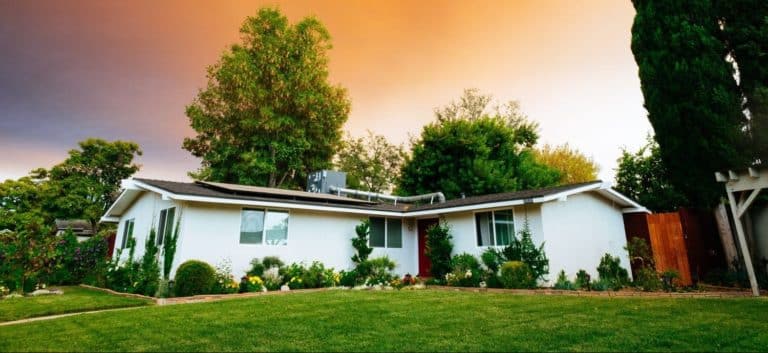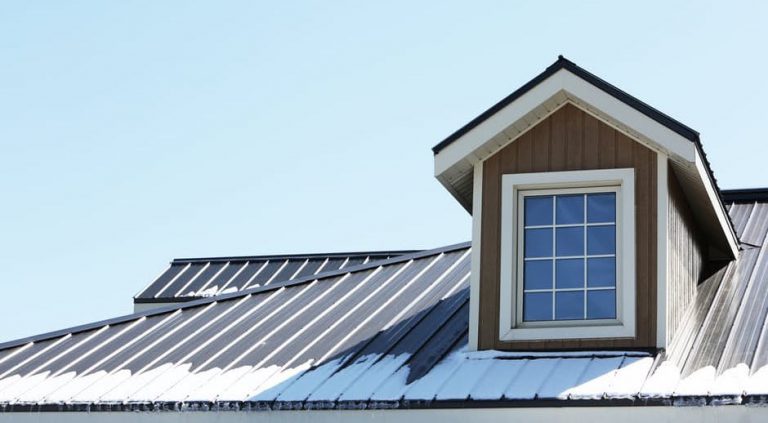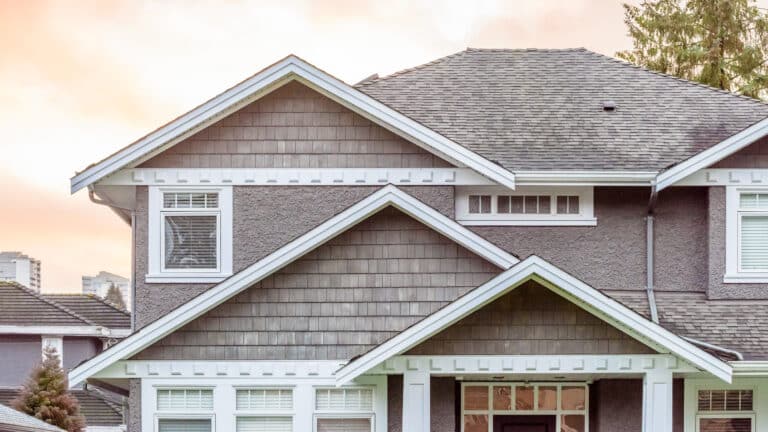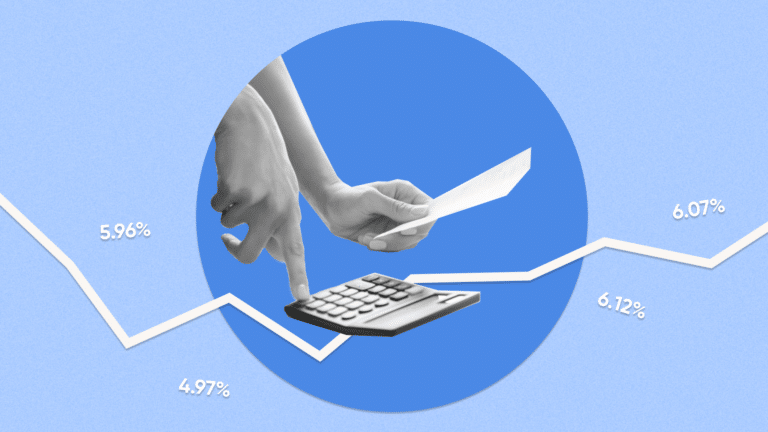When you want to buy a home, you may not know all the details involved, including how much of a down payment you need.
When it comes to mastering a task, such as learning to ride a bike or learning about investments, someone may have taught you.
It’s the same with buying a house, so let Morty guide you.
So, how much down payment for a house? We’ll teach you more about minimum down payment amount requirements, how down payments impact home loan offers and how to assess the amount you need to put down for a home.
Minimum Down Payment Requirements by Loan Type
First, let’s take a quick look at minimum down payment requirements for FHA, conventional, VA and USDA loans. It’s important to note that some of these down payment options depend on loan type — for example, you cannot put 0% down on a conventional loan.
FHA Loans
The Federal Housing Administration (FHA) insures FHA loans. Borrowers who have credit challenges or less in savings may want to consider a FHA loan. You’ll need to have a minimum 3.5% down payment and a credit score of 500 or higher for an FHA loan. You may have to pay a mortgage insurance premium (MIP) for the entire duration of your FHA loan. Putting 10% or more down allows for 11 years of MIP instead of for the life of the loan. Otherwise, you will pay MIP for the life of your FHA loan. You would have to refinance to a conventional loan to stop paying MIP.
Conventional Loans
The U.S. government does not directly back conventional loans. These loans fall into two types of categories: conforming and nonconforming.
- Conforming loans: These loans fit the eligibility requirements to sell to Fannie Mae and Freddie Mac, two government-sponsored enterprises (GSEs) that buy loans from lenders. You can only borrow up to $647,200 for a single-family unit in most parts of the U.S. in 2022, though you’ll find that the limits are higher where the median home price soars over the national average.
- Nonconforming loans: Nonconforming loans don’t meet Fannie Mae and Freddie Mac guidelines and requirements.
You’ll need to have a credit score of at least 620 to qualify for a conventional loan based on Agency guidelines. The minimum down payment may vary, depending on whether you are a first-time homebuyer or not. First-time homebuyers may qualify for a conventional loan with a 3% down payment.
VA Loans
Qualified veterans, active service members and spouses can get VA loans through mortgage lenders. The Department of Veterans Affairs (VA) backs these loans. VA loans do not require a down payment, and the VA doesn’t specify a credit score to qualify.
Note that qualified borrowers must pay a VA funding fee to obtain a VA loan.
USDA Loans
USDA loans, backed by the U.S. Department of Agriculture, offer another government-backed option. Borrowers must live in a qualifying rural area and meet specific income requirements to qualify for USDA loans. USDA loans do not require a down payment and do not have a fixed credit score requirement.
Options for Down Payments
Struggling to come up with a down payment? Let’s go over a few programs that may help you.
State Assistance Programs or Homebuyer Grants
Down payment assistance programs in your state may help you qualify for grants or assistance to help reduce the amount you need to save for a down payment. You can explore the options in your state to make sure they fit your situation.
Low Down Payment Loan Programs
In addition to the low down payment options available through FHA loans, a few other low down payment loan programs also exist. Let’s take a look at a few options you may want to consider:
- Fannie Mae HomeReady mortgage program: Fannie Mae’s HomeReady mortgage program refers to a low down payment loan program backed by Fannie Mae. HomeReady loans require a 3% down payment and flexible underwriting. HomeReady requires you to pay for mortgage insurance.
- Freddie Mac Home Possible mortgage program: Freddie Mac, the counterpart to Fannie Mae, backs the HomeReady program. The program also requires a 3% down payment and mortgage insurance.
- 97% Loan-to-Value (LTV) mortgage: Available from both Fannie Mae and Freddie Mac, a 97% LTV mortgage requires a 3% down payment. You will need to pay for mortgage insurance, just like with the HomeReady and Home Possible programs.
- Piggyback loan: Piggyback loans mean you take out two separate loans, so a second mortgage loan is involved. A first mortgage would get paid off before a second mortgage, so a second mortgage takes second priority.
In a piggyback loan, the first mortgage covers 80% of the purchase price. The second mortgage, the piggyback, covers 10% of the home price, usually as a home equity line of credit (HELOC). You pay the remaining 10% of the home price as a cash down payment. The benefit to this 80/10/10 option involves the fact that you don’t pay private mortgage insurance. If you don’t have enough for a 10% down payment, you can also choose an 80/15/5 option.
- Good Neighbor Next Door program: The Good Neighbor Next Door program, sponsored by the U.S. Department of Housing and Urban Development, allows borrowers who work in certain public service professions to buy a home in a qualifying area. The program provides a discount of up to 50% on a home with a $100 down payment. As a buyer, you can get a discount of 50% from the list price of a home as long as you commit to live in the property for 36 months as your principal residence.
No Down Payment Options
In addition to VA loans and USDA loans, which require no down payment, you may consider a couple of other no-down payment options:
- Doctor Loan Program: You can find some zero-down options through the Doctor Loan Program, for residents and fellows, doctors and dentists. These professionals may not have to pay private mortgage insurance.
- Credit unions: Some credit unions offer zero-down mortgage options but require you to become a member to qualify. Check with local credit unions for details.
First-Time Homebuyer Programs
First-time homebuyer programs and grants may come from states or cities to help with down payment or closing costs. Many towns and cities offer grants (which you don’t have to repay) or low-interest loans. Some programs have income limits. Your state’s housing authority website or HUD-approved housing counseling agency can help you learn about first-time homebuyer assistance in your city.
Homebuyer programs might also help those in specific professions, such as for educators or first responders.
How Credit Score Impacts Down Payment Requirement
Your credit score, a three-digit number that represents how well you pay back debt, is a key factor in determining whether you qualify for a mortgage. The larger your down payment, the more likely you’ll qualify for a mortgage with a lower interest rate. Ultimately, your credit score will help determine how much of a down payment you must have for the loan you choose.
Common/Acceptable Sources of Down Payments
Where might you pull money for your down payment? Several common down payment sources include the following:
- Cash from your checking or savings accounts
- Funds in your personal 401(k) or IRA
- Stocks, bonds or mutual fund investments
- Keogh Plans
- Trust accounts
Cash Gifts as Down Payments
If you’ve been given a cash gift toward a down payment by a parent, grandparent or other relative, your lender will want you to disclose the source of these funds. The lender wants to get a clear understanding of your financial situation.
You may need to supply a gift letter, which should include the amount of the gift and a confirmation that you don’t have to pay the money back. Your relative may also need to show evidence of the transfer of funds, such as a copy of the deposit slip.
How Down Payment Impacts Loan Offers
Your loan-to-value (LTV ) ratio measures the relationship between the loan amount and market value of a home. Analyzing your LTV ratio helps lenders assess the risk level you present. When you put down a larger down payment, you lower your LTV. Doing so can help you get a lower interest rate on your mortgage loan.
You can determine your LTV ratio using the following formula:
LTV ratio = (Amount owed on the loan ÷ Appraised value of asset) x 100
Let’s use this formula using actual numbers. Let’s say you plan to buy a home that has an appraised value of $200,000 and that you plan to put $40,000 down.
LTV ratio = ($160,000 ÷ $200,000) x 100
In this case, the LTV equals 80%. Now, let’s show how you can shrink your LTV ratio if you put more down. Let’s say you put down 30% instead.
LTV ratio = ($140,000 ÷ $200,000) x 100
With this change, the LTV ratio equals 70% and lowers your LTV ratio.
Down Payment for Second Home and Investment Properties
Did you know that you must often put down a higher down payment for a second home compared to your primary residence?
Lenders evaluate your eligibility for second homes differently than they do for primary residences. Second homes present more risk compared to primary residences because borrowers must prioritize primary mortgages if they’re in a situation where they have to default on their loans.
Just like for your primary residence, the higher your down payment for a second home, the less of a risk you present to lenders.
Benefits of Higher Down Payments
When you make a higher down payment, you can tap into some benefits. Let’s take a look at a few:
- Lowered interest: Lenders will usually offer you better interest rates when you have a lower LTV ratio. As already mentioned, a larger down payment lowers this ratio and risk to your lender.
- Less total interest on your loan: You may save a significant amount of money over the life of your mortgage. The relationship looks kind of like this: A larger down payment equals a lower interest rate, which leads to less total interest on your loan and a lower loan principal.
- Smaller monthly payments: You can shrink your monthly mortgage payment by putting down a larger down payment.
- Faster home equity: When you put down a larger down payment, you build more equity. For example, a 30% down payment builds more equity than if you put 20% down.
- No PMI obligation: You won’t pay for PMI if you put down more than 20% for a conventional loan. Read on for more information about PMI below.
Down Payment and Your Loan-To-Value Ratio (LTV)
If the lender finds the LTV too high, you can choose between a few options:
- Offer a larger down payment
- Buy a lower-priced home
- Choose a different loan type
Choosing one of these options can help you reduce your LTV ratio. Consider using the formula described above to determine your new LTV ratio.
Private Mortgage Insurance (PMI) Obligations
Private mortgage insurance (PMI) refers to insurance you pay to protect your lender if you put down less than 20% for a conventional loan.. Your lender can cancel PMI once you’ve built 20% equity in your home.
Your lender must automatically terminate PMI when the mortgage balance reaches 78% of the original purchase price, provided you are in good standing and haven’t missed any scheduled mortgage payments.
If you want to avoid PMI altogether, you can put down a 20% or larger down payment.
How Much Should You Put Down on a House?
Putting at least 20% down on a home with a conventional loan will increase your chances of getting approved for a mortgage with a lower interest rate and help you avoid mortgage insurance.
However, you can still put down less than 20% even with a conventional loan. Other loans, such as FHA loans, VA loans and USDA loans (as discussed above) also require low- to no down payments.
Down payment requirements can also vary by lender and your credit history.
Assess How Much Down Payment You Can Afford
How much down payment can you afford? Consider the following:
- The amount of money you have in savings
- Initial expenses of a new house
- Closing costs, which usually vary
- Other financial goals you have, such as saving for retirement or college
- Debt reduction, particularly if you have high-interest debt
- Costs of starting or supporting a family
- Emergency savings fund
- Additional expenses of owning a home, including property taxes maintenance, unexpected repairs and insurance
Examining all of these considerations can help you decide how much you want to put down.
Benefits of Pre-Approved Mortgage
What is a pre-approval? A pre-approval refers to the first step in determining how much you can receive for a mortgage loan. Note that lenders offer a wide range of pre-approvals — each lender has different processes.
Getting a pre-approval can help you discern the possible loan amount and down payment. Getting a pre-approval helps you understand how much of a loan you can get and how much of a down payment you’ll need to put down.
Comparing quotes from multiple lenders or even bringing in a rate from another lender can help you negotiate a certain lender down to a better rate. Doing so can save you thousands of dollars in interest.
If you can’t get the interest rates you’re looking for, you can also increase your credibility by raising your credit score or putting down a larger down payment, for example.
Ready to buy a home? Take a look at Morty’s home buyer’s guide and learn more about the homebuying process. You can also check your loan options on Morty.
This post was updated on Feb. 11, 2022 to reflect the FHFA’s current conforming loan limits.







